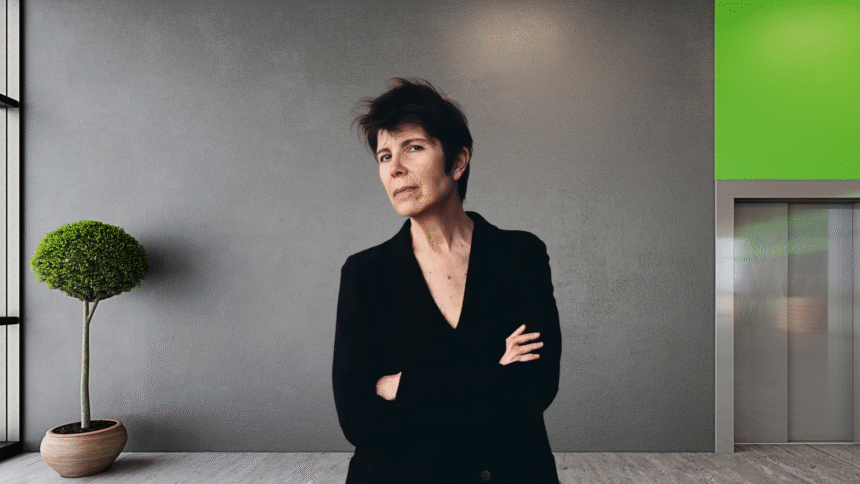Elizabeth Diller’s career has always been about questioning limits. From her early days as a young immigrant in New York to her place today among the world’s most respected architects, she has built a path that is anything but conventional. Her work is not just about designing buildings, it’s about reshaping how people experience the city around them.
Growing Up Between Worlds
Elizabeth Diller was born in Lodz, Poland, and moved to New York as a child. Her parents were Holocaust survivors, and the experience of loss and survival was always present in her upbringing. Diller has spoken about growing up without extended family, something that left her with a deep sense of resilience and what she calls a “survivor’s instinct.”
New York became her home, and though her parents had modest expectations, Diller was drawn to art from a young age.
She enrolled at The Cooper Union in the 1970s, originally interested in visual art. Architecture entered her life almost by accident, through an elective course. It was there that she met Ricardo Scofidio, a professor whose sharp mind and playful approach to ideas drew her into a different world. That meeting would change the course of her life.
A Partnership That Redefined Practice
Diller and Scofidio not only became partners in life, but also in work. In the late 1970s, they began practicing together, and by 1981, they had established their studio in New York. Their early projects did not look like typical architecture. Instead, they blurred the lines between art, performance, and design.
The most famous example of this period was the Blur Building, created for the Swiss Expo in 2002. It wasn’t a building in the traditional sense, but rather a cloud of mist rising over Lake Neuchâtel. Visitors walked into a space made of vapor, challenging the very idea of what a structure should be. It was a work of imagination that made people rethink the role of architecture in their lives.
Over time, the firm evolved into Diller Scofidio + Renfro (DS+R), joined by Charles Renfro as a partner in 2004. Together, they grew into one of the most influential design studios in the world.
Bringing Public Spaces to Life
If the Blur Building was about ephemerality, DS+R’s later projects were about permanence and public life. Their most famous achievement is the High Line in Manhattan, created in collaboration with James Corner Field Operations and Piet Oudolf. The project transformed an abandoned elevated railway into a park that winds through the city, lined with gardens, art, and places to rest. What was once a forgotten industrial track became one of New York’s most beloved destinations.
Other landmark works followed: the Institute of Contemporary Art in Boston, which opened onto the city’s waterfront; the renovation of Lincoln Center, giving new energy to one of New York’s cultural hearts; the expansion of the Museum of Modern Art (MoMA); the Broad Museum in Los Angeles; and the innovative cultural space known as The Shed, designed with Rockwell Group at Hudson Yards. Each project shared a sensitivity to how people interact with space and a willingness to experiment with form.
Recognition and Honors
Diller’s work has earned recognition from across the world. In 1999, she and Scofidio became the first architecture practice to receive the MacArthur Fellowship, often called the “genius grant.” It was an unusual honor for architects at the time, and it signaled that their work was pushing boundaries in ways that mattered beyond the profession.
In the years that followed, awards and honors came steadily:
- TIME 100 (2009 and 2018), where she was noted as the only architect on the list in 2018.
- The Jane Drew Prize (2019) celebrates her role in advancing the work of women in architecture.
- The Royal Academy Architecture Prize (2019), recognizing her contribution to cultural life through design.
- The Wolf Prize in Architecture (2022) is one of the most prestigious international honors in the field.
These milestones tell the story of a career that began on the margins but grew into global recognition.
Teaching and Mentorship
Alongside her practice, Diller has also been a teacher and mentor. She taught at her alma mater, Cooper Union, from 1981 to 1990, and later became a Professor of Architecture at Princeton University. In the classroom, she is known for encouraging students to question assumptions and to embrace risk, values that have guided her own career.
Her influence extends beyond academia. She has also served on cultural and urban councils, including the United Nations Council on Urban Initiatives, where her voice contributes to shaping the future of cities worldwide.
Between Architecture and “Not Architecture”
What makes Elizabeth Diller stand out is her refusal to be boxed in. Her firm often describes its work as existing in two halves: Architecture and Not Architecture. One side includes buildings, museums, and theaters. The other includes installations, performances, and projects that can’t easily be defined.
This dual identity keeps her work experimental, even as DS+R has become a mainstream name. She has said she believes in jumping into projects “totally unqualified,” with the confidence that new ideas come from taking risks.
Why Her Story Matters
Elizabeth Diller’s journey, from a Polish immigrant child to one of the world’s most celebrated architects, is a story of persistence, curiosity, and creativity. She did not follow a straight path, and she never limited herself to a single definition of architecture. Instead, she has shown how design can be a form of questioning, of opening spaces both physical and cultural.
Her work has given cities new life, made institutions more open to the public, and sparked conversations about what architecture can and should be. More than anything, Diller reminds us that buildings are not just about walls and roofs, but about the people who move through them.









